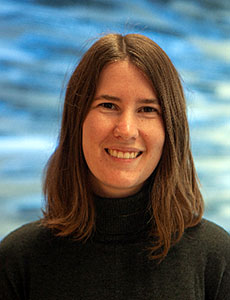Tracking oceanographic changes and climate implications in Holocene Antarctic coastal zones
A possible explanation for the rise in atmospheric CO2 over the past 10,000 years is increased supply of deep water-sourced nutrients to the surface ocean coupled to lower relative nutrient utilization in the open ocean, allowing outgassing of deeply stored carbon. Coastal Antarctic zones are highly productive regions that sequester a significant proportion of carbon fixed in the Southern Ocean surface, yet changes in nutrient utilization throughout the Holocene, and consequent impact on atmospheric CO2, remain unconstrained. A circum-Antarctic Neoglacial transition occurred ~4.5 ka, leading to reduced primary productivity in coastal zones due to increased sea ice extent. In my project, I will generate a high-resolution Holocene record of diatom-bound nitrogen isotopes at IODP Site 1357 in the Adélie Basin, East Antarctica to characterize nutrient utilization under an open ocean versus sea ice-dominated coastal regime.
Biography
I grew up in Collegeville, Pennsylvania, but it was family trips around the country that motivated my interest in Earth science. While we attempted to visit all 50 states, I was fascinated by changing landscapes and weather patterns. As a geology major at Colgate University, I was introduced to paleoclimate research under the mentorship of Dr. Amy Leventer. I used diatom assemblages in marine sediments to reconstruct environmental changes in Antarctica over the last 10,000 years. Now, as I pursue my Ph.D. at the University of Rhode Island’s Graduate School of Oceanography, working with Dr. Rebecca Robinson, I use the nitrogen isotopic composition of diatoms’ shells to investigate oceanographic changes between glacial and interglacial cycles. I am fortunate to work with both live diatoms in culture as well as diatom fossils in Antarctic marine sediments as I study how past climate change informs projections of future change. In addition to my research, I enjoy knitting, and sometimes combine my passions by knitting patterns based on paleoceanographic datasets.







